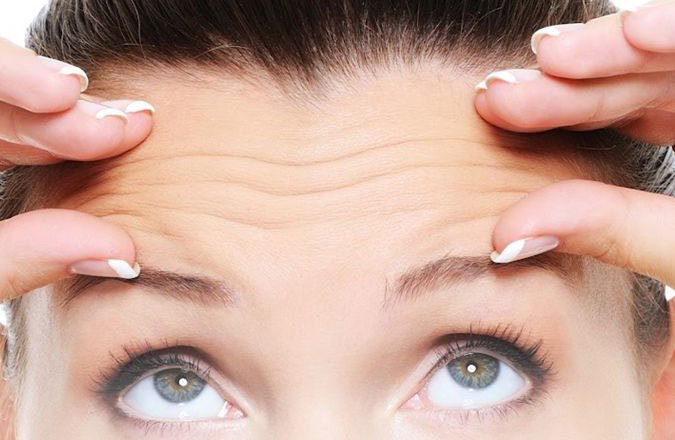Did you know that almost 90% of women gain stretch marks during their pregnancies?
Stretch marks seem almost unavoidable for the majority of women and a fair number of men as well. Partly it can be blamed on genetics, as some people develop stretch marks regardless of the precautions they take. Partly it is the fault of people themselves, as they eschew preventive methods or are ignorant as to what methods are available. We will go into detail on available preventive methods a little later in this article.
What are Stretch marks, and how do they occur?
Stretch marks are very common, and are formed when the skin is stretched as a consequence of underlying tissue expansion. Due to the skin’s inflammatory reaction, stretch marks can appear to be reddish or purple in colour when they first form. As the skin heals, the marks are replaced by scar tissue, resulting in a whitish or silvery colour.
Stretch marks appear due to tissue growth or rapid hormonal changes that are associated with puberty, pregnancy, or weight gain or loss. The odds of whether or not you will experience stretch marks increase if rapid tissue growth occurs in a short period of time. In simple word stretch marks are formed when the body grows faster than the elasticity of the skin allows for.
Who is most likely to experience Stretch marks?
Generally, stretch marks affect mostly women, but men can be affected as well. People of all ages, races, and life stages are subject to stretch marks.
➢ One of the most common causes of stretch marks is rapid weight gain in a short period of time. Stretch marks usually appear on any part of your body where extra fat is stored, such as your stomach, hips, or thighs. The size and the amount of stretch marks depend on the extent of weight gained and amount of time involved.
➢ It is common for teenagers both boys and girls to develop stretch marks during puberty. Pubescent girls may experience stretch marks on their breasts, thighs, hips, or even behind their knees. Similar to weight gain, the rapid growth of the body tissue is a simple explanation for the cause of these stretch marks.
➢ Another most common cause of stretch marks in women is pregnancy. You are highly likely to develop stretch marks around your stomach as your baby continues to grow. Multiple pregnancies can lead to the formation of new stretch marks but not all pregnancies produce stretch marks- this means that genetics play an important role in whether or not someone experiences stretch marks.
➢ An athlete trying to gain muscle in a short period of time can experience stretch marks as well. Bodybuilders are prone to stretch marks on their shoulders from rapid muscle gain. This is the result of the muscle growing faster than the skin elasticity allows.
Are there treatments or products that can remove Stretch marks?
➢ Applying a body cream or oil rich in Vitamin E on areas where stretch marks can be expected, for example, around the belly during pregnancy, can minimise the chance of developing stretch marks.
before they occur.
➢ Skin needling is one of the most effective treatments for stretch marks. A topical numbing cream is applied to the surface of the skin. The skin is then needled or rolled to create thousands of tiny holes, increasing skin cell activity and enhancing collagen production as part of the healing process. The only side effect is a slight “sun-burnt” feeling, and the skin returns back to normal the following day. This treatment promotes smoother healthier skin and improves the appearance of old and new stretch marks.
➢ Laser treatments and Intense pulsed light are popular methods for treating stretch marks. Laser and IPL treatments stimulate collagen and elastin production by increasing skin cells turnover. A course of 4-6 treatments can significantly improve skin firmness and elasticity, as well as minimising the look of stretch marks.
➢ Utilizing Radio frequency is one of the safest treatments for stretch marks. Radio currents are forced into deep skin layers, mildly heating the underlying skin tissue. The heat increases skin cell activity on and around the treatment area, which boosts collagen and elastin. The result is a firmer and smoother skin texture, and a reduction in the appearance of stretch marks. The best result can be seen after a course of 1 session per week for 10 weeks.
Applying topical retinoid or moisturizer with Vitamin A in conjunction with above treatments will give you a better result, especially for newly formed stretch marks. Studies show that new moms who applied retinoid cream 0.1% every day for three months improved their baby-bump related stretch marks by 20%.
Please keep in mind that treatment modality is different for every individual. A combination of different treatments with topical creams may be required to get the best result, depending on your skin type and the amount and severity of your stretch marks. The earlier you receive the treatment the more effective your results will be.
At Medix Clinic, we offer a comprehensive range of skin and cosmetic treatments tailored to your needs. Our services include acne scarring in Melbourne, scar treatment in Melbourne, and radio frequency microneedling in Melbourne to promote skin repair and regeneration. We also provide professional skin needling in Melbourne, advanced skin tightening in Melbourne, and effective skin tag and mole removal in Melbourne. For pigmentation issues, we offer targeted pigmentation removal in Melbourne, and to restore your skin’s glow, we specialise in skin rejuvenation in Melbourne. Additionally, you can enhance your smile with our safe and effective LED teeth whitening in Melbourne
Elham
Clinic manager
Contact Us



